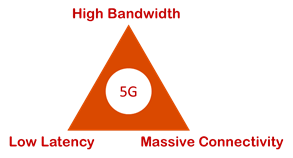Introduction
5G mobile networks offer the promise of higher bandwidth, lower latency, and massive connectivity. To meet the diverse requirements necessary to achieve each of these goals, not only the radios but also the network supporting the radios will need to be updated.

Operators are designing 5G disaggregated radio access networks (RANs) that separate the traditional baseband unit (BBU) into distinct components that consolidate resources, lower network latency, and allow higher bandwidth services. In many cases, packet-based fronthaul is a critical part of the disaggregated 5G RAN, supported by a new set of hardware devices designed to optimize packet fronthaul and meet stringent new 5G requirements.
This report introduces the technology and hardware needed for 5G network transport. Topics described include:
- The need for an optimized 5G RAN
- The current state of 4G RAN and Centralized RAN (C-RAN)
- 5G disaggregated RAN architecture description and benefits
- 5G fronthaul requirements and solutions
- Packet-based fronthaul for 5G: definition, requirements, and benefits
- A survey of current product offerings for TSN-capable 5G-optimized packet fronthaul hardware including Ciena, Cisco, Ericsson, Fujitsu, Infinera, and Nokia.
Definition: Time Sensitive Networking
Time Sensitive Networking (TSN) is based on a set of IEEE standards developed to improve timing in data-centric networks. Capabilities include the ability to interrupt long packet transmission if a higher priority, timing-sensitive packet is queued. With 5G networks, strict timing is critical for packet-based fronthaul connections, and support for TSN ensures that capability. Packet pre-emption capability is not required on fronthaul devices that are not also carrying enterprise traffic (since all eCPRI traffic is time sensitive and high priority), but is included in the systems that are intended to be deployed for both purposes.
Clients log in to access full report
